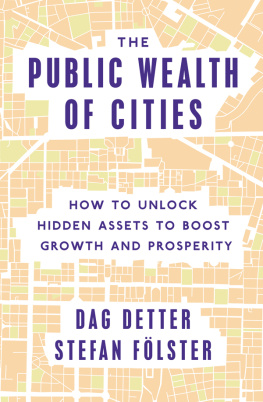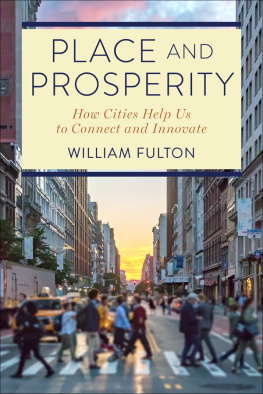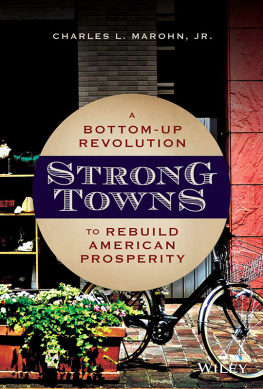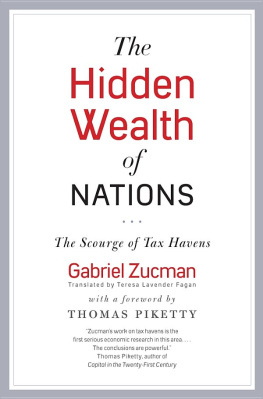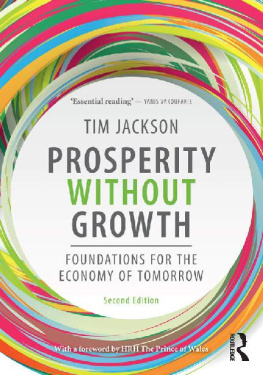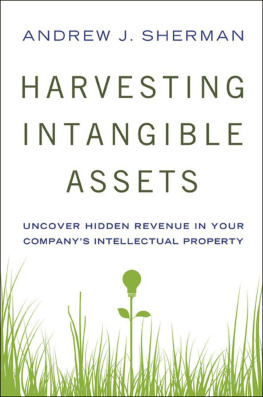THE PUBLIC WEALTH OF CITIES
How to Unlock Hidden Assets to Boost Growth and Prosperity
DAG DETTER
STEFAN FLSTER
BROOKINGS INSTITUTION PRESS
WASHINGTON, D.C.
Copyright 2017
THE BROOKINGS INSTITUTION
1775 Massachusetts Avenue, N.W., Washington, D.C. 20036
www.brookings.edu
All rights reserved. No part of this publication may be reproduced or transmitted in any form or by any means without permission in writing from the Brookings Institution Press.
The Brookings Institution is a private nonprofit organization devoted to research, education, and publication on important issues of domestic and foreign policy. Its principal purpose is to bring the highest-quality independent research and analysis to bear on current and emerging policy problems. Interpretations or conclusions in Brookings publications should be understood to be solely those of the authors.
Library of Congress Cataloging-in-Publication data
Names: Detter, Dag, 1959 author. | Flster, Stefan, author.
Title: The public wealth of cities : how to unlock hidden assets to boost growth and prosperity / Dag Detter, Stefan Flster.
Description: Washington, D.C.: Brookings Institution Press, [2017] | Includes bibliographical references and index.
Identifiers: LCCN 2017000423 (print) | LCCN 2017016266 (ebook) | ISBN 9780815729990 (ebook) | ISBN 9780815729983 (hardcover: alk.paper)
Subjects: LCSH: Municipal finance. | Strategic planning. | Urban economics.
Classification: LCC HJ9105 (ebook) | LCC HJ9105 .D47 2017 (print) | DDC 352.4/216dc23
LC record available at https://lccn.loc.gov/2017000423
9 8 7 6 5 4 3 2 1
Typeset in Adobe Caslon
Composition by Westchester Publishing Services
Contents
DAN DOCTOROFF
Rich City, Poor City Cities Are the Locomotives of Nations The Turbo City The Treadmill Town From Treadmill Town to Turbo City
Treadmill Tribulations Social and Human Wealth Lie Fallow Infrastructure Delusions Listening to Pied Pipers
The False Promises of Exclusive and Extensive Cities The False Promise of Extensive Cities Turnaround Cities How Turbo Cities Build Assets Summing Up the Secret of Turbo Cities
The Hidden Value of Public Wealth in Cleveland Financial Accounting, Accountability, and the Rise and Fall of Cities Turbo Cities Focus on Stocks, Treadmill Towns on Flows A Proper Public Sector Balance Sheet as a Promoter of Economic Growth
Publicly Owned Commercial Assets The Real Estate Challenge Developing the Real Estate Portfolio and Maximizing Value The Balance Sheet: Prerequisite of an Independent Urban Wealth Fund Fundamental Principles of Professional Asset Management How to Create an Urban Wealth Fund
Singapore: Temasek Portfolio Management of Real Estate vs. Operational Assets Hong Kong: The MTR Corporation Copenhagen: City and Port Urban Wealth Fund Hamburg: HafenCity London: Continental Railways Limited Jernhusen: A Property Developer in Sweden Locum: A Specialized Health-Care Real Estate Manager in Sweden Stockholm Stadshus: A Residential Property Holding Company London: Potential for an Urban Wealth Fund
Social Investments Social Investment in Emerging-Market Cities Freeing Social Investment from Entrenched Interests
The Education-as-Investment Fallacy The Value of Human Assets Grow Human Assets with Better Lifelong Learning Tailor Learning to Employers Needs Increase Demand for Citizens Skills Political Barriers to Increasing the Value of Human Assets
Case Study: Jaime Castros Three Lonely Years in Bogot Cities That Get Stuck From Soft City to More Democracy
Foreword
DAN DOCTOROFF
Founder and CEO
Sidewalk Labs
THERE IS MUCH RUMBLING ABOUT FEDERAL cutbacks to cash-strapped cities. Overlay that with a clarion call to invest in crumbling infrastructure before the underpinnings of our great urban centers give way. The Public Wealth of Cities offers a solution for city leaders to amass the capital they need to balance municipal budgets, fill every pothole, and reinforce wobbly overpasses and tunnels. Our cities can continue to be great places to live, work, and play.
Cities have the assets to fill their coffers, to capitalize social development and human capital, and to avoid unnecessary poverty, unemployment, and crime. Cities in the twenty-first century should not have to face shrinking populations or falling life expectancy.
Having been deputy mayor for economic development and rebuilding for the city of New York in the aftermath of 9/11, I know how innovation and smart thinking can rescue a city. We completely rethought the way New York used its assets, especially land, to dramatically strengthen the citys physical and fiscal base.
This book calls for all cities, not just a city like New York, to unlock the value of public assets as a core urban strategy. Doing so can uncover hidden social, human, and economic wealth.
Dag Detter and Stefan Flster make a powerful argument that cities can finance their future and emerge stronger by placing public assets under more professional guidance. Every city owns swathes of poorly utilized real estate or controls underperforming utilities. Smarter choices could meaningfully enhance the value of investments.
The urban strategy called for here is not geared for only big cities, those with a robust technology sector, or the ones featured regularly on urban innovation blogs. All cities throughout the United States and globally are sitting on real wealth. Their assets just need to be realized through better management, and as with any portfolio, officials need to know what to sell and what to hold. Shifting attention and resources from short-term spending to investments that can improve quality of life has already led to remarkable success in some cities.
At Sidewalk Labs, the urban innovation company that I founded in partnership with Alphabet, we work at the intersection of the physical and digital worlds to help make cities more efficient. I see every day the remarkable things that cities can accomplish, as well as how public sector commercial assets are often not tapped to the citys best advantage. Cities need clearer goals. They need to track results and accelerate what works.
This is a book I urge people to read carefully and absorb. Whether a city manager, a devoted urban dweller, or simply someone who cares about the future of cities, the arguments developed throughout these pages will resonate. Public wealth is exactly that: something valuable to us all.
Preface
MANY CITIES IN THE UNITED STATES and around the world are in a state of disrepair, some of them to the extent that their inhabitants are actually fleeing. Others cities do exceptionally well in nearly all respects, attracting jobs, pressing back social ills, and developing more pleasing and greener surroundings.
What do blooming cities do that flailing ones dont? Despite decades of research there is very little actual evidence. Recipes for success are either anecdotal or trivial, pointing to vicissitudes beyond a citys control, such as deindustrialization or social change.
In this book we show that there is a simple reason why researchers find it hard to pin down what makes cities succeed. Successful cities may be doing nothing remarkable now, but may have built public wealth decades ago. This insight also leads to surprisingly clear recommendations on how to turn a flailing citys fortunes. Our claim originates with insights we arrived at in a previous book on how successful nations manage their wealth.

